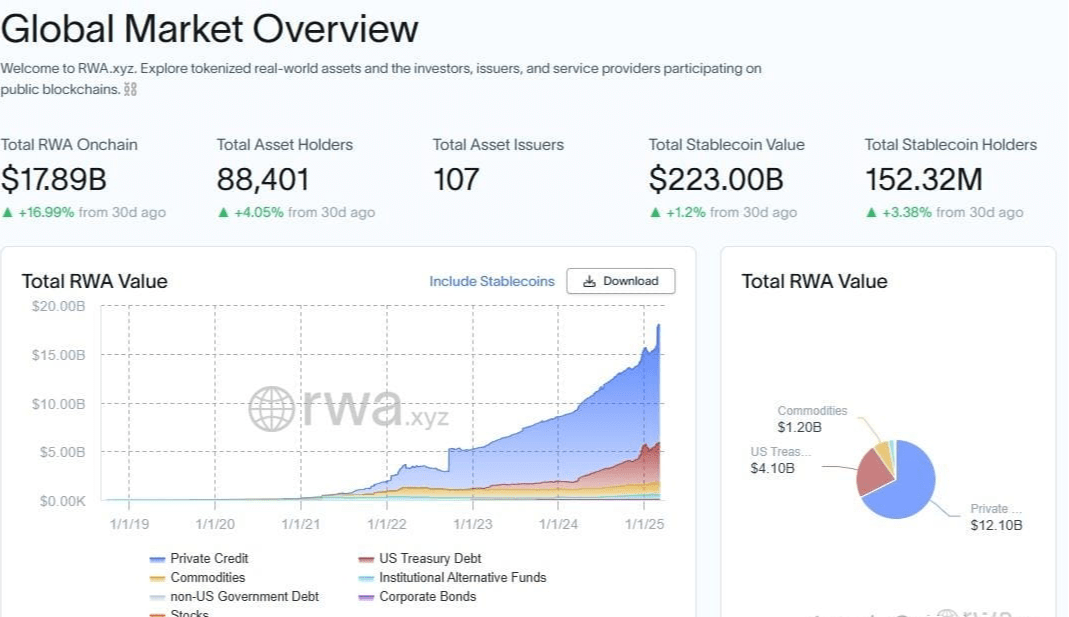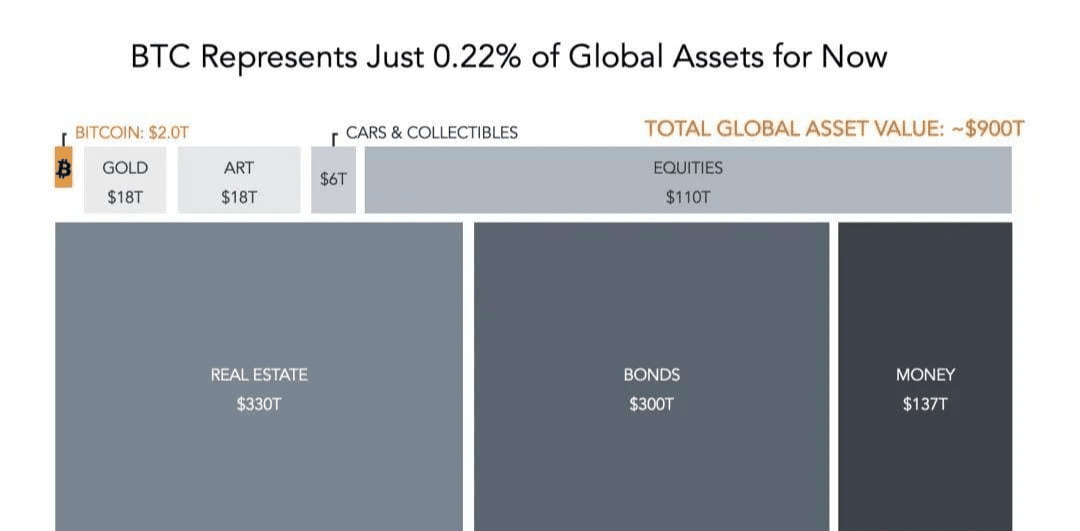In recent years, the tokenization of US stocks has become a hot topic in the integration of blockchain and traditional finance. BackedFi was the first to bring Coinbase shares on-chain, attracting global attention. The tokenization of US stocks not only introduces real assets into the on-chain economy, enriching ecological diversity, but also may attract traditional investors into the crypto space. However, it faces challenges in regulation, technology, and liquidity, with enormous potential for future development.
Introduction
In recent years, the crypto space has witnessed a surge in discussions about the tokenization of traditional financial assets, with the tokenization of US stocks undoubtedly being the most eye-catching new story. BackedFi was the first to bring Coinbase ($COIN) shares onto the Base chain in tokenized form, quickly igniting discussions within the industry. Meanwhile, the second-largest securities exchange in the US, NASDAQ, announced on March 7 that it has applied to the SEC to extend its stock market trading hours to 24 hours a day, five days a week, expected to be implemented in the second half of 2026.
This plan aims to meet the needs of global investors, especially those in Asia, in response to the trend of US stock tokenization breaking time and geographical limitations. The dual transformation of US stock tokenization and the extension of trading hours by traditional exchanges not only showcases the intersection potential of blockchain technology and traditional finance but also raises deeper questions: Will they further siphon off liquidity from the crypto space? How will this innovation reshape the boundaries between the crypto world and traditional finance?
The background of BackedFi's collaboration with Coinbase
BackedFi is a tokenized securities issuer based in Zurich, Switzerland, focusing on converting real-world assets (such as stocks and US Treasury bonds) into ERC-20 tokens through full collateralization. Its products include tokenized stocks of Tesla, NVIDIA, Coinbase, MicroStrategy, and the S&P 500 ETF, as well as fixed-income tokens linked to short-term US Treasury bonds from BlackRock. These tokens rely on Chainlink's 'Tokenized RWA Infrastructure' (including price oracles, reserve proofs, and cross-chain protocols) to ensure that on-chain prices are linked to the market and verify asset authenticity, laying the technical foundation for the tokenization of US stocks.

BackedFi has a deep-rooted collaboration with Coinbase. Jesse, the head of Coinbase Wallet and Base Chain, discussed the tokenization of $COIN using BackedFi as an example, indicating a close relationship between the two. This collaboration not only drives BackedFi's head start but also suggests that the integration of traditional finance and the crypto world is accelerating.
The appeal of tokenizing US stocks
The greatest appeal of tokenizing US stocks lies in its introduction of 'real world assets' (RWA) into the blockchain ecosystem, enriching the diversity of on-chain assets. The total market capitalization of US stocks reaches up to $110 trillion, which is only a small fraction of the global $90 trillion assets but is one of the most attractive sectors in global finance. Compared to the crypto market relying on native tokens, stablecoins, or NFTs, the tokenization of US stocks injects new vitality and stability into the on-chain economy.
For users who cannot invest directly in US stocks, tokenization provides a convenient channel. BackedFi's $wbCOIN is pegged 1:1 to Coinbase shares in USDC, bypassing KYC, tax, or cross-border payment barriers, allowing non-US residents to participate in 24/7 on-chain trading. This 'going global' model for US stocks not only attracts global funds but may also draw traditional investors into the crypto ecosystem. Furthermore, the asset backing and market foundation of US stock tokenization may compel crypto projects to shift from speculative narratives to value creation.
Trends and challenges of integration
The tokenization of US stocks is not limited to asset digitization; it may also mark the starting point for the deep integration of traditional finance and the crypto world. If mainstream exchanges like the NYSE and NASDAQ achieve 24-hour on-chain trading, users may be able to stake US stock tokens on-chain, participate in liquidity mining, or even create new plays combined with meme culture. BackedFi's $bCSPX (S&P 500 ETF token) has integrated liquidity through Balancer, allowing global trading without KYC, breaking geographical and time constraints, and demonstrating a dual enhancement of inclusiveness and liquidity.
However, challenges are also significant. Regulatory risks are paramount: BackedFi restricts US residents from purchasing $wbCOIN to avoid compliance issues, but the complexity of cross-border regulation still poses risks, especially in the US and EU markets, where there is no definite conclusion on how to balance innovation and protection. The technical aspect is also critical: the on-chain price of $wbCOIN ($223) is higher than the broker's after-hours price ($217), which may stem from oracle discrepancies or arbitrage opportunities; its 'one-way valve' design (only allowing purchases with USDC, not selling actual stocks on-chain) is more likely to trigger trust disputes.

According to data from RWA.xyz, as of March 10, the total market capitalization of tokenized RWAs reached $17.9 billion, a year-on-year increase of 92.5%. Among them, the market cap of tokenized stocks is only $1.592 million but has grown by 157.9%, indicating huge potential. BackedFi's bTokens account for over 90% of this segment, with $bCSPX leading with a market cap of $7.388 million, but liquidity is concentrated on public chains like Gnosis, and cross-chain scalability needs improvement.
Balance between liquidity and ecology
Will the tokenization of US stocks siphon off liquidity from the crypto space? The answer is both complex and full of possibilities. In the short term, speculative funds may flow towards high-quality tokenized assets, but this is not necessarily a bad thing. However, BackedFi's model exposes a key limitation: its tokenization mechanism resembles a 'one-way valve'—users can only purchase tokens (like $wbCOIN) with on-chain assets such as USDC, operated by BackedFi, while the US stocks they hold (like Coinbase shares) cannot be sold directly on-chain. This design strictly limits liquidity within the crypto funds, and traditional stockholders cannot participate, which may slow the direct impact on crypto liquidity. However, when the tokenization of US stocks truly matures and tokens linked to real assets become mainstream, who will still speculate on those baseless 'air coins'? The tokenization of US stocks may force crypto projects to move away from speculative narratives and shift towards value-driven approaches.

In the long term, the tokenization of US stocks on the blockchain may not only attract traditional investors but also enhance the ecological resilience by diversifying the types of on-chain assets. For example, BackedFi reduces the entry barriers through Balancer, potentially injecting new vitality into the crypto space. Crypto is reshaping the global asset landscape worth $90 trillion: from BTC corresponding to gold, USDT corresponding to currency, to the current tokenization of US stocks, the blockchain is gradually covering the traditional financial sector. As a top-tier asset, the tokenization of US stocks could be a milestone in bridging traditional finance. However, the crypto ecosystem needs to maintain innovation and avoid losing its original vitality due to excessive reliance on traditional assets.
Conclusion
The tokenization of US stocks is an imaginative experiment that is both interesting and significant. Despite facing challenges in regulation, technology, and liquidity, its prospects are promising. BackedFi's $bCSPX and $wbCOIN are just the beginning; if more US stocks are tokenized and integrated into DeFi and meme culture, financial markets may showcase unprecedented diversity. Ultimately, whether it siphons off liquidity from the crypto space depends on how the ecosystem balances innovation with stability. Regardless of the outcome, this transformation will leave an imprint on the history of global finance.